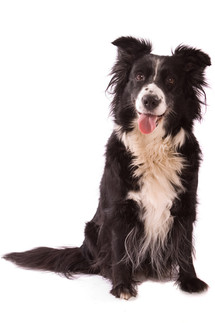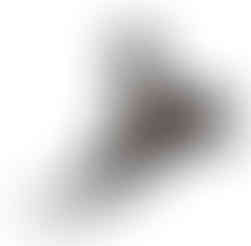What is Predatory Aggression?
- Dr Andrew Matole, BVetMed, MSc

- Oct 22, 2023
- 7 min read

Predatory aggression in dogs is a specific type of aggressive behavior that is instinctual and is the desire to hunt, chase, capture, and potentially kill small animals. It's essential to understand that predatory aggression is a natural behaviour in dogs, rooted in their evolutionary history as predators. Predatory aggression is a type of behaviour that is directed at the capturing of prey. It is more appropriately considered a type of foraging rather than aggression. This behaviour can be seen in various species and is deeply rooted in early hunting behavior. In the context of animals, it is aggression directed typically towards another animal, motivated by the desire to hunt, capture, kill, and consume species viewed as prey. Predatory aggression is typically silent or absent of vocalizations and the bite is often damaging or uninhibited.

Some dogs also have this innate impulse to hunt their prey, predatory aggression. Some hunting and tracking breeds, like hounds and terriers, exhibit this need more frequently than others, but any dog can experience it. Given that there is frequently no prior notice, this is one of the most potentially dangerous types of aggression. Predatory aggression is a more appropriate type of foraging instead of aggression. The unrestricted bite is part of an attack that aims to kill prey. Because of their size and behaviour similarities to that of prey, infants and young children may be at risk. Predatory animals may behave more aggressively in groups, even while thorough socialization to a species may diminish predation towards that species.
What are the presenting signs of predatory aggression?
Predatory aggression is a degree of territorial aggression and the signs can vary depending on the context and can include avoiding eye contact, yawning or licking the lips, pinning or flattening the ears tightly to the head, crouching, lowering the body, or tucking the tail under the body, and stiffening or freezing. Predatory aggression usually occurs under little, if any, autonomic influence and is exhibited towards prey by predatory animals, usually involving one or more components of predation. Moving objects may trigger it in an animal that does not frequently hunt. The behaviour tends to be rewarding as it is self-reinforcing.

Predatory animals may stalk or pursue prey animals (birds, cats, other dogs, perhaps children) stealthily. Predatory may also be directed towards moving objects, e.g., cars, bikes, joggers, livestock, cats, vehicles, joggers, children (young crying infants possibly perceived as vulnerable prey).

Group predation is also possible whereby the dog only engages in hunting behavior if with other dogs. In acute presentation, it involves one or more signs that include stalking, pouncing, killing bite, and relocation to another area to feed. Predatory aggressive animals should not be left unattended with young children or infants. Normal predatory behaviour but in inappropriate circumstances. Predatory aggression associated with stalking is always potentially more dangerous than predatory behaviour associated with barking at and chasing moving objects or people.
In summary, the key characteristics of predatory aggression in dogs include:
Stalking Behaviour: Dogs exhibiting predatory aggression often display stalking behaviors. They may crouch down, move slowly, and focus intently on a target, much like a predator stalking its prey.
Chase and Capture Instinct: Once the target starts moving, the dog may chase after it with determination. This behavior is similar to a hunting dog pursuing a fleeing animal.
Bite and Shake: If the dog catches up to the target, they may engage in a bite-and-shake behavior. This mimics the actions of a predator trying to subdue its prey.
Lack of Provocation: Unlike other forms of aggression, predatory aggression typically occurs without any apparent provocation or threat from the target. It's primarily driven by the dog's innate hunting instincts.
High Arousal Level: Dogs in a predatory state are often highly aroused, focused, and may be less responsive to commands or distractions.
Target Preference: Dogs with predatory aggression often have a specific preference for certain types of targets, such as small animals like squirrels, rabbits, or even smaller dogs or cats.
Which breeds of dogs are predisposed to predatory aggression?
Predatory aggression behaviour is typically seen in certain breeds or individual dogs with a strong prey drive. The breeds that harbour predatory behaviour include:-
Border Collie
Greyhound.
Terriers.
How does predatory aggression develop?
Predatory aggression in dogs is a complex behaviour influenced by a combination of genetic, environmental, and situational or predisposing factors. It's important to understand how this behaviour develops to address it effectively and the following explain it in detail:-
1. Genetic Factors:
Predatory aggression can have a genetic component. Certain breeds, such as terriers and sight hounds, are more predisposed to predatory behavior due to their historical roles as hunters. Genetic factors can influence a dog's prey drive, which is the innate motivation to chase and catch moving objects or animals.
2. Sensory Perception:
Dogs have highly developed senses, including vision, hearing, and smell. Predatory aggression often begins with sensory perception. When a dog perceives or detects stimuli that trigger their prey drive, such as the movement of a small animal, their senses play a critical role in initiating the behaviour.
3. Brain Structures:
The dog's brain is responsible for processing sensory input and generating behavioral responses. The amygdala, hypothalamus, and certain areas of the cerebral cortex are involved in regulating aggression and predatory behavior. These brain regions can be activated when a dog perceives potential prey.
4. Hormonal and Neurotransmitter Factors:
Hormones and neurotransmitters, such as adrenaline and dopamine, play a role in predatory aggression. The sight of potential prey can trigger the release of adrenaline, which prepares the dog for action. Dopamine, associated with pleasure and reward, can reinforce the behavior if the chase and capture result in a satisfying outcome.
5. Learning and Experience:
Dogs learn through experience and observation. Predatory aggression can be reinforced through successful hunts or play sessions involving toys that mimic prey. Additionally, dogs may learn from their interactions with other dogs or animals, which can influence their predatory behavior.
6. Environmental Factors:
Environmental factors, such as the dog's upbringing and socialization, can also impact predatory aggression. Dogs that have not been exposed to a variety of stimuli during their critical socialization period may be more prone to inappropriate predatory behavior.
7. Behavioural Triggers:
Predatory aggression can be triggered by specific stimuli, such as the sight or presence of small, fast-moving objects like squirrels or small animals. The dog may exhibit behaviours like stalking, chasing, and possibly biting when in pursuit of the perceived prey.
How do you assess a dog for predatory aggression risk?

Assessing a dog for predatory aggression risk is a crucial aspect of ensuring the safety of both humans and other animals. Risk assessment is essential so that no child or infant is left in the presence of an unsupervised dog which shows any tendency to predatory aggression or causes a risk to livestock, joggers etc. The following can be used to assess predatory aggression of a dog:-
Gather Background Information: Start by obtaining a thorough history of the dog's behavior from the owner or caretaker. Ask about any previous incidents of aggression, especially those involving smaller animals or wildlife.
Observation and Evaluation: Observe the dog's body language and behavior in various situations. Look for signs of predatory behavior, which may include:
Intense focus on small animals or objects.
Stalking or crouching posture.
Fixated staring.
Quick and sudden movements.
Raised hackles (the hair along the dog's back).
Testing: Conduct controlled tests to assess the dog's response to stimuli like toys, small animals (under supervision), or even moving objects. Pay attention to how the dog reacts. A high level of interest and persistence in pursuing such stimuli could indicate predatory tendencies.
Consultation: Seek input from a professional dog behaviorist or trainer who specializes in aggression. They can provide valuable insights and guidance on assessing and managing predatory aggression.
Physical Examination: Perform a physical examination to rule out any underlying medical issues that might contribute to aggression, such as pain or discomfort.
Behavior History Questionnaire: Use a behaviour history questionnaire to gather detailed information about the dog's past behaviour, interactions with other animals, and any triggers for aggression. This can help identify patterns and potential triggers.
Environmental Assessment: Evaluate the dog's living environment and make recommendations for managing and modifying it if necessary. For example, keeping the dog away from small animals or birds can reduce opportunities for predatory behavior.
How is Predatory Aggression Diagnosed?
A client's history and signs of aggression, chasing (livestock, cats, vehicles, joggers, children) and particular attention to a dog's behaviour before attack and the triggers can be used to classify a dog as a predatory aggressor. Signs such as stalking, staring, silently pursuing a smaller animals, aggression towards another animal or object involving some or all of the stages of predatory behaviour or aggression directed against an infant or child can all be used to conclude that a dog has predatory aggression.

Other types of aggression need to be differentiated from predatory aggression e.g.,
territorial aggression whereby a dog reacts aggressively towards animals, car,s bicycles, etc entering or already present in a given area. Diseases such as Rabies disease should also be ruled out.
How is predatory aggression treated?
Training to improve overall level of obedience to return from distractions. the training should include redirecting hunting drives onto games with toys, e.g., search games and counterconditioning. Initial symptomatic treatment.
The dog should physically be prevented from accessing trigger factors.
Euthanasia may be required in severe cases.

How does one prevent and control predatory aggression?
Managing predatory aggression involves training and controlled exposure to trigger stimuli. For example, using positive reinforcement techniques to redirect the dog's attention or teaching a reliable recall command can be effective strategies. Training and management addresses predatory aggression and leads to behavior modification. Positive reinforcement training techniques can be used to redirect the dog's focus and reinforce appropriate behaviors. Techniques such as obedience training, impulse control exercises, counter-conditioning techniques and positive reinforcement can help manage predatory instincts.

To prevent predatory aggression, it's essential to socialize puppies from a young age and expose them to various environments and stimuli. Controlled exposure can help desensitize the dog to potential triggers.
It's important to note that predatory aggression is not a sign of malice or ill-will on the dog's part. Instead, it's an instinctual behavior deeply ingrained in certain breeds.
In severe cases, consulting with a professional dog behaviorist or trainer with experience in aggression issues is recommended.
Predatory aggression can be challenging to manage completely, so it's essential to monitor the dog's behavior regularly and make adjustments to the behavior modification plan as needed.
Any dog that engages in predatory behaviour must be kept from repeating it because it is a common and harmful behaviour for dogs.
What about Legal and Ethical Considerations?
Be aware of local laws and regulations regarding aggressive dogs. In some cases, it may be necessary to report aggressive behaviour, and the dog may need to be muzzled or restrained in public.

References
Beaver B (1983) Clinical Classification of Canine Aggression. Appl Anim Ethol 10, 34-43.
Overall, K. (2013). Manual of Clinical Behavioral Medicine for Dogs and Cats. Elsevier Health Sciences.
Horwitz, D. F., & Mills, D. S. (2009). BSAVA Manual of Canine and Feline Behavioural Medicine. BSAVA.
Overall K L (1997) Clinical behavioral medicine for small animals. pp 114-115, 269.
Askew H (1996) Treatment of behavior problems in dogs and cats. pp 178-179.
N., Sam M.S., "Predatory Aggression," in PsychologyDictionary.org, April 7, 2013, https://psychologydictionary.org/predatory-aggression/ (accessed September 17, 2023).
Overall, K. L. (2013). Clinical Behavioral Medicine for Small Animals. Mosby.
American Veterinary Society of Animal Behavior (AVSAB) Position Statement on Breed-Specific Legislation. (2014). AVSAB.
Organisation(s)
1. American Veterinary Society of Animal Behavior. (2008). [Position Statement on PuppySocialization(https://avsab.org/wpcontent/uploads/2018/03/Puppy_Socialization_Position_Statement_Download_-_10-3-14.pdf).
2. Overall, K. (2013). [Manual of Clinical Behavioral Medicine for Dogs and Cats](https://www.elsevier.com/books/manual-of-clinical-behavioral-medicine-for-dogs-and-cats/overall/978-0-7020-3388-3). Elsevier.










Kommentare